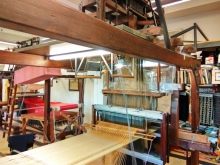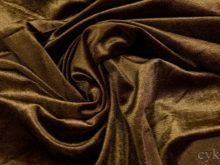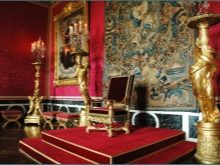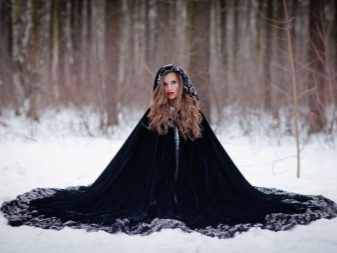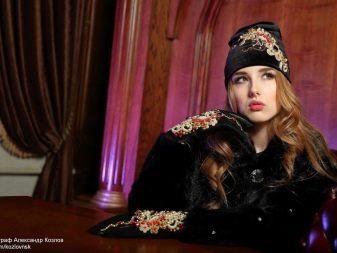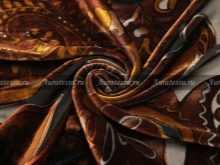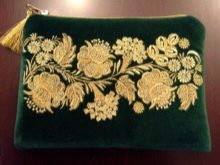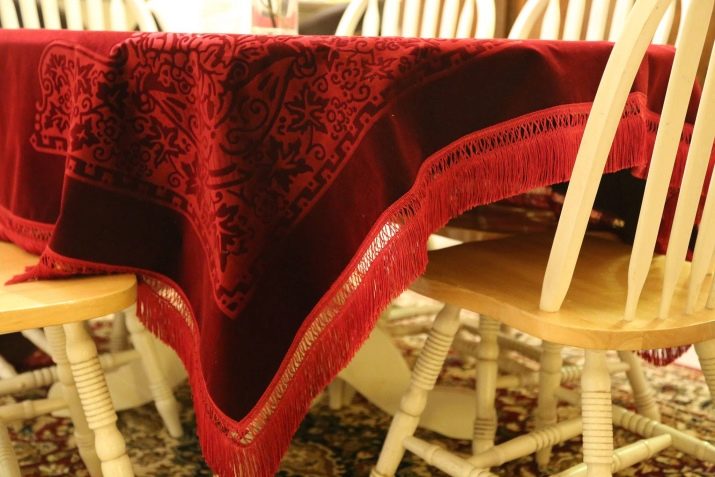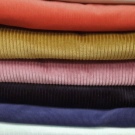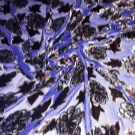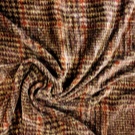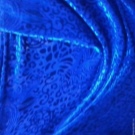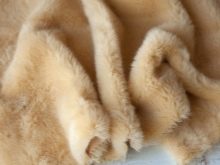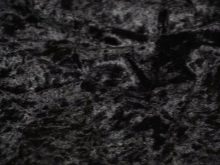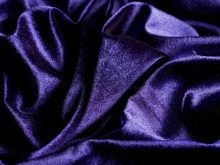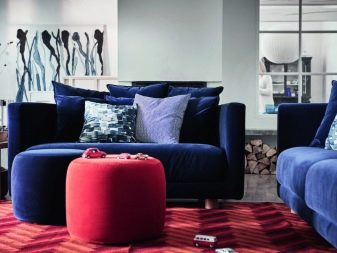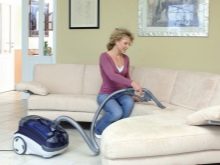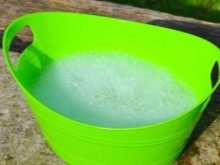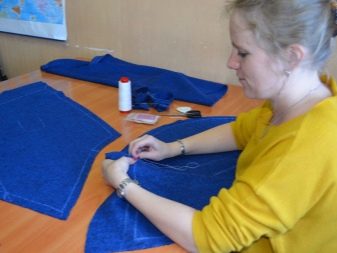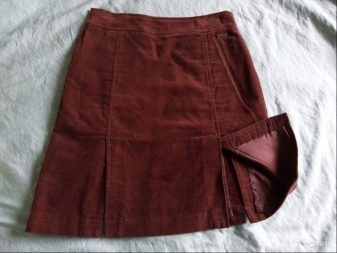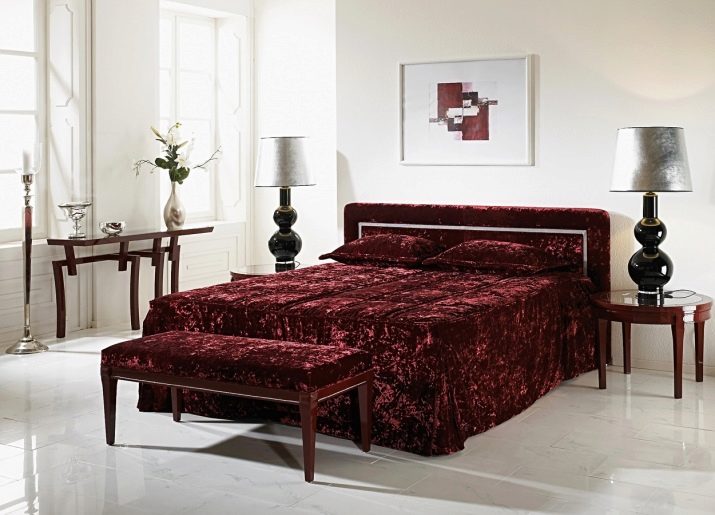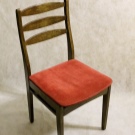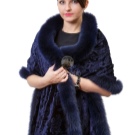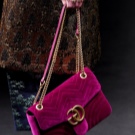Velvet was considered a luxury at all times. Its manufacture is very expensive. But any thing out of it, be it a work of art, clothes or a piece of furniture, is all considered noble chic.
What it is?
The history of the origin of the fabric has its roots in the distant past. Velvet is a derived name from the German Barchent, which means “bozmey”. In France, this fabric was called velor, and in England - velveteen. But today all these are different types of fabrics and it is not worth combining them with velvet.
The first descriptions of this type of fabric belong to the XI century. This is the period of the early Middle Ages, when manufactory production was not yet and all fabrics, including the rarest and most expensive, were made by hand on special machines. Characteristics and composition of paintings of those times are distinguished by a special technology, which came, most likely, from the Antique East. It was there that all types of silk-based fabrics were first produced. Through the silk road, these fabrics, and then their production technology, fell into other countries.
In Europe, the production of this type of tissue was exclusively engaged in the weavers' guild. In the XIII century, she moved to Italy, where it was entrenched to this day. Weavers belonged to the privileged class, they were entrusted to the royal palaces. Often, velvet manufacturers equipped entire caravans of ships for trade with other countries. They were wealthy wealthy people. Still would! After all, the noble fabric was delivered to the court of the king himself.
Only the richest merchants and nobles of that time could sew clothes from it. They were velvet robes, hats, shoes and accessories decorated with precious stones and metals. A scattering of pearls on the purple velvet decorations of the royal nobility was a sign of their noble origin. Queen Elizabeth and King Karl are depicted with a brush of medieval artists in expensive clothes with mantles of noble velvet.
Velvet fabric is still considered one of the most expensive in the world. Over the centuries, little has changed in its production. It is still made of silk threads. New technologies allow to produce velvet on the basis of synthetic materials, as well as with the addition of organic fiber, viscose and wool.
At the moment there are two ways to produce fabric with pile.
The cutting method consists in fastening the fabric base of two cloths by cutting the fibrous ties. Formed a flat purl and "terry" - the front.
The looped method is obtained by stretching the loops from a knitted fabric base and then cutting them. It turns out the characteristic structural iridescent surface.
Velvet fabric obtained by any of the methods described above is dyed and decorated with embroidery, embossed, as well as a pattern or ornament is filled. Velvet fibers are mixed with a pile of various fabrics. So it turns out suede - artificial leather; Velor - similar to leather, soft on one side and smooth on the other; Plush - material with shaggy long pile, velveteen - fabric with a fleecy hem.
Accessories and clothing, household items and home textiles are made of velvet: decorative pillows, stoles, drapes and tablecloths, canopies and bedspreads, as well as upholstery and decorations.In jewelry stores, jewels are laid out on a velvet basis, since this material gently reflects the light, emphasizing favorably the advantages of jewelry made of gold, silver or platinum.
In theater and film industry, velvet material plays an important role in creating historical images. From it sew costumes and form the decor.
Kinds
Velvet fabric is one-sided - with a nap located only on the front side, and bilateral - when there is a nap on both sides, with stretch threads, and also combined with elements of a drawing or ornament.
For the production of velvet fabrics, special technologies are used, thanks to which new types of fabrics appear. The most common ones.
Velvet Eraser, known as Velvet. This is a natural ribbed weave fabric. The size (step) of the scar depends on the quality of the fabric, its density and method of production.
Polubarh - it is the same velvet, only with a shorn pile.
Velvet chiffon has a thin airy fabric structure. It includes panne on silk threads with a radiant surface.
Sisal - a type of velvet on a buttonhole basis.
Bagheera - a type of fabric with a particularly durable structure, rough to the touch. Its name was due to its similarity with the woolen skin of an animal.
Devore - also a type of velvet fabric on a silk basis with the addition of viscose yarn, allowing to produce fabric with patterns on the surface.
Lyon velvet it is distinguished by a rigid status of fabric consisting of artificial or natural silk with the addition of cotton and synthetic threads.
Pearl Velvet It belongs to the most valuable types of fabrics, as it basically contains only natural silk. Due to this it has a characteristic name.
This is not the whole list of types of velvet. Modern developments and innovative approach provide for obtaining new varieties of this material.
There are so-called velvet analogues: Plush fabric - a cheaper analogue based on synthetics, as well as velor with stretch - elastic hygroscopic material, specially designed to optimize the use in sports rulers of fashionable clothes.
Previously, velvet fabrics had only a limited range of colors. Often they were stained in purple or dark blue. Dresses, decorations and outfits of this palette we see on the canvases of historical eras of ancient times.
But today the colors of this type of fabric can be different: red, black, white, blue, green, yellow, pink or red. All of them depend on dyes and method of coloring. Manufacturers use textile colors on natural and synthetic bases, and also paint them with the help of polymers and new innovations in golden and silver tones.
Whatever type of fabric you use in everyday life, clothing or accessories, follow the general rules of care for things of this type, based on its advantages and disadvantages.
Benefits
The quality of velvet material has proven itself for a long time. This material has several advantages, advantages and positive properties:
not electrified;
hypoallergenic;
esthetic;
practical and easy to use;
possesses sound insulation properties.
After washing the velvet does not shrink and does not lose its shape.
Care instructions
Velvet is considered to be capricious material, it requires careful attitude and special care. It is necessary to properly store and be able to clean velvet products, for this There are a number of rules based on material properties:
- To remove dust, it is enough to vacuum the products. Upholstered furniture is covered with wet gauze and cleaned with light tapping. You can also do with home textiles and clothing
- Do not often wash clothes velvet. They erase delicate fabric exclusively by hand, in warm water with a special mild detergent.After that, they do not squeeze, but put on a terry towel to remove water, and only then they dry, carefully spreading it on a horizontal surface. When the fabric dries, things are hung and dried away from the sun's rays.
- In the care of things you should avoid aggressive cleaning products and detergents, as well as all sorts of sprays and conditioners. You should also not irrigate your favorite fragrances things from this type of fabric. Essential oils, getting on clothes, are difficult to remove and, over time, instead of aroma, emit unpleasant odors.
- Ironing things from velvet is not recommended. To do this, use special steamers. After that, the fabric is brushed with a brush of medium hardness with gentle movements in the direction of the pile.
- You can not fold velvet things. This fabric does not tolerate creases and deformities. If you decide to put things in storage, it is best to hang them on the hangers, turned inside out and put them in the closet. In no case do not fold them twice, three times or four times, or the threads of the fabric can simply break.
- In case of serious contamination, as well as to remove difficult stains, products from velvet should be dry-cleaned. So you save the thing for years to come.
disadvantages
Perfect in everyday life, this type of fabric is rarely used in public places. For example, in the restaurant and hotel areas, it is not applicable due to its ability to absorb dust, dirt and odors. Caring for these kinds of things - furniture upholstery, tablecloths and curtains, is always very expensive. Therefore, analogs of delicate fabric are often used in the interior of this kind.
A feature of velvet is the ability to overload the space. Therefore, it is not used for decoration of small rooms. Fabric requires a lot of space. Her qualities - to refract, mute and emphasize the light - are favorably played up in the halls and chamber spaces. Do not forget that this fabric, as well as things with its use, can visually reduce the space. Noble coating is inappropriate to use for the decoration of the nursery or kitchen.
Among the features of this material are the following:
high hygroscopicity: velvet quickly collects dust and dries for a long time;
loses color from the sun;
sewing things is complicated due to the difficulty in sewing clothing items, so this material is often worked by hand or on special sewing machines (in the old days this was done by seamstresses);
velvet products need a lining frame due to the wear of the fabric.
If you take into account the characteristics of this material and properly care for it, you can successfully use products made of velvet for a long time.
How is it used?
Velvet fabric is used in different ways.
From velvet obtained elegant curtains, curtains and curtains. Therefore, in everyday life it is often used to create stylish interiors.
In order to decorate the space and create historical styles, designers are wrapping upholstered furniture and chairs with velvet fabrics in a single color scheme. They use the property of fabrics in complex draperies, furniture covers, wall panels and floor coverings; create jacquard patterns of velvet applications and paintings, draw up window and door openings, arches and stylized buttresses of the interior spaces.
As stole, canopy and bedspreads in bedrooms. The fabric, acting as protection from light and sound, creates a cozy soothing atmosphere.
As a curtain screen for delimiting zones of space in the interior.
As a wall covering - bedspread in the best traditions of the "baroque" style.
As an element of the interior. Velvet is used to decorate lamps, sconces, figurines, pillows and rollers, using in combination with satin, organza, taffeta and silk. They adorn such things as real works of art: beads, loose rhinestones and semiprecious stones, and gilding. Velvet is successfully combined with silk fringe, tassels, ribbons, lace, braid and other decor.
As accessories, they mainly follow two directions: eclecticism and retrospectives. Fashion trends are represented by accessories in the form of handbags, stoles, scarves and shoes with elements of chic: velvet, satin and silk, decorated with fur, leather, suede and glass beads under expensive jewelry.
In the fashionable lines of famous designer houses such as Burberry, Lacoste, Prada, Gucci, Christian Dior, Chanel, Giorgio Armani, Versace, Colin's and others, they often use the velvet theme to create bright images of modern, comfortable clothes. The velvet roses of Gianni Versace, who conquered the world in the 80s of the last century, still adorn the evening dresses of many American stars.
Napoleon Bonaparte was the first ruler, who introduced velvet in uniforms of his army. Camoles a la Napoleon is still used as a basis in fashion shows and demonstrations, and they are also included in the collections of global clothing brands.
Combining velvet with stretch, create a “pressed” pleated fabric on a noble basis.
People do not want to part with velvet, so the designers have introduced it into use. Now, this fabric is used to sew not only elegant wrap-around dresses, all kinds of evening dresses and business suits, but also home clothes: pajamas, bathrobes and slippers.
Velvet fabrics are used as an exposition at exhibitions of jewelry, costume jewelry, gadgets, designer shoes and accessories.
Refined, elite, noble, elegant and at the same time practical, this type of fabric is deservedly considered an element of luxury and wealth. He will not leave anyone indifferent. Whoever touched it, felt the extraordinary softness, coolness and charm of its surface and amazing structure, does not want to continue to part with these sensations.
The use of velvet in everyday life has become commonplace. Now not only representatives of the royal dynasty can afford things from this valuable material. This material has its own character, rich history and requires special treatment, taste and respect. Therefore, if handled skillfully, it can become not only an ornament, but also a practical addition to clothing or interior.
The use of velvet fabric requires special skills. Velvet is used as a material for sewing dresses, curtains, as well as decorative elements in the interior.
An overview of velvet fabrics is presented in the following video.

